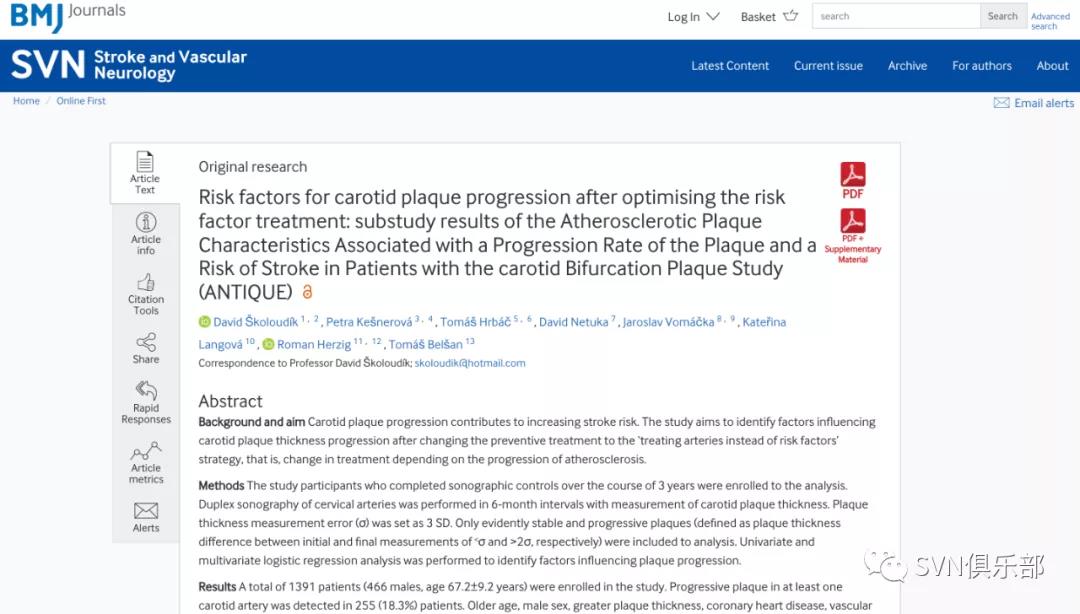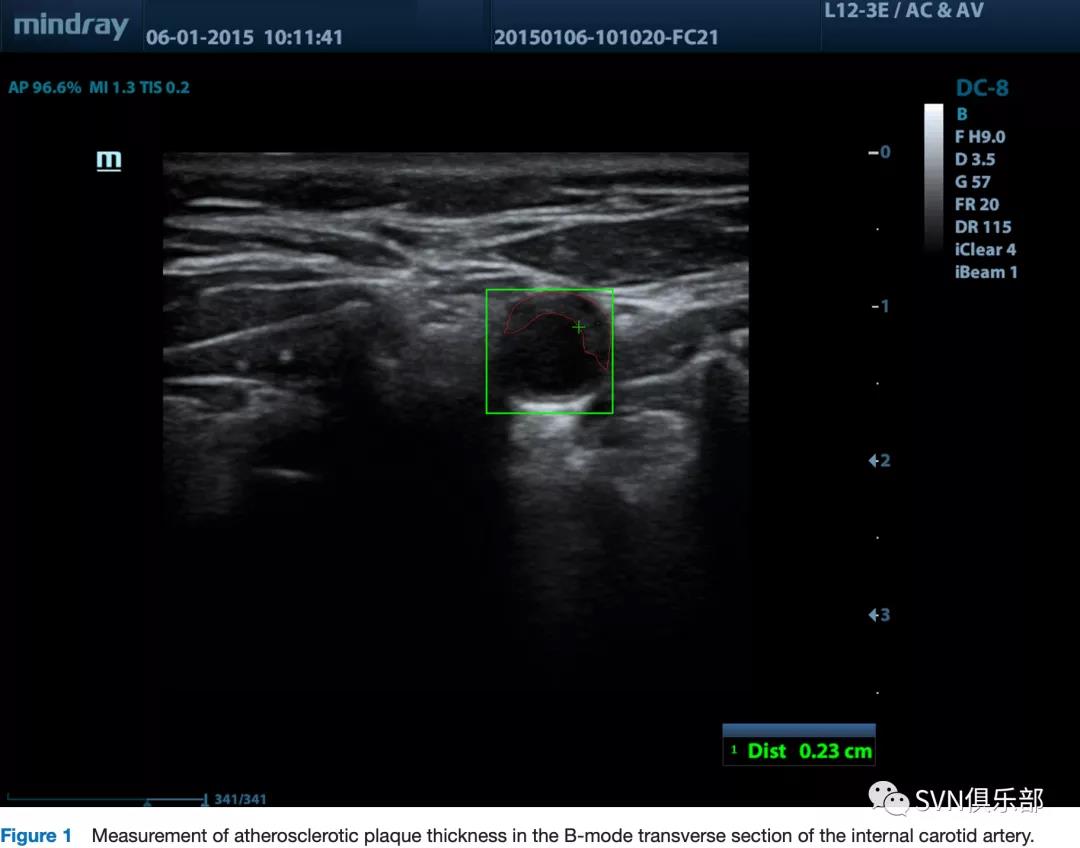查看更多
密码过期或已经不安全,请修改密码
修改密码
壹生身份认证协议书
同意
拒绝

同意
拒绝

同意
不同意并跳过





Risk factors for carotid plaque progression after optimising the risk factor treatment: substudy results of the Atherosclerotic Plaque Characteristics Associated with a Progression Rate of the Plaque and a Risk of Stroke in Patients with the carotid Bifurcation Plaque Study (ANTIQUE)
David Školoudík, Petra Kešnerová, Tomáš Hrbáč, David Netuka, Jaroslav Vomáčka, Kateřina Langová, Roman Herzig, Tomáš Belšan
doi: 10.1136/svn-2021-001068

Stroke & Vascular Neurology(SVN)最新上线文章“Risk factors for carotid plaque progression after optimising the risk factor treatment: substudy results of the Atherosclerotic Plaque Characteristics Associated with a Progression Rate of the Plaque and a Risk of Stroke in Patients with the carotid Bifurcation Plaque Study (ANTIQUE)”,来自捷克Ostrava大学医学院健康研究中心David Školoudík等。
颈动脉斑块进展可增加卒中风险,本研究旨在明确将预防性治疗调整为“治疗动脉而非危险因素”的策略后,影响颈动脉斑块厚度进展的因素,即根据动脉粥样硬化的进展改变治疗。在3年内完成超声检查的研究参与者被纳入研究,每隔6个月对颈动脉进行一次多普勒超声检查,并测量颈动脉斑块厚度。斑块厚度测量误差(σ)设置为3 SD。仅明显稳定和进展的斑块(分别定义为初始和最终斑块厚度测量值之间的差异<σ和>2σ)被纳入分析。采用单因素和多因素Logistic回归分析以明确影响斑块进展的因素。

研究共纳入1391例患者(男性466例,年龄67.2±9.2岁)。在255例(18.3%)患者中检测到至少一根颈动脉中的进展性斑块。年龄较大、男性、斑块较厚、冠心病、血管手术/支架置入手术史及吸烟在进展性斑块患者中更常见(p<0.05 in all cases)。多因素Logistic回归分析仅明确了斑块厚度(OR 1.850 for left side, 95%CI 1.398 to 2.449; and OR 1.376 for right side, 95%CI 1.070 to 1.770)是影响斑块进展的独立因素。

研究结论:在优化预防性治疗后,与狭窄严重程度相对应的颈动脉斑块厚度是斑块进展的唯一独立危险因素。

来源:SVN俱乐部
转载已获授权,其他账号转载请联系原账号
查看更多